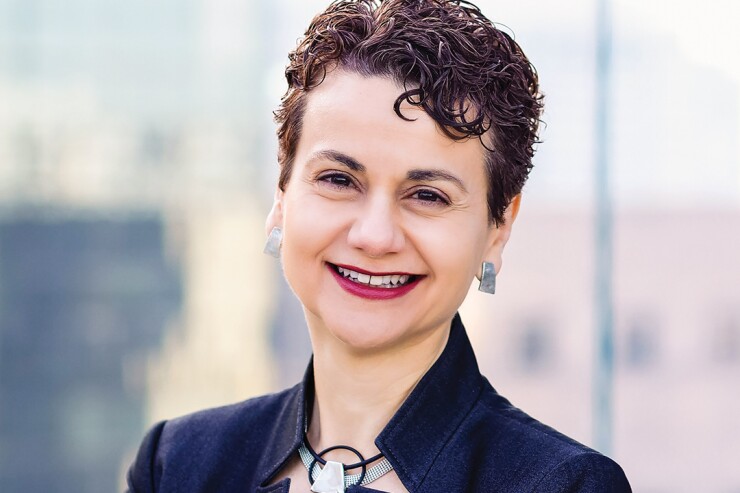
When BMO closed its
Johannson, who was tapped to be the executive leading the integration of the two banks, has appeared on the
She has spent her year concerned with several groups of stakeholders in the merger: Bank of the West staffers, BMO's American employees and those who work in its Canadian unit. She's also looking after all their separate customers, many of whom are far from Chicago, where BMO's U.S. unit and Johannson herself are based.
"Now BMO is a top-ten U.S. bank, which was our vision a while ago," she said. "It's a great franchise, a great West Coast market to be playing in."
The expanded network of locations, now with BMO signage, will help spread awareness of the bank in places where it hasn't had a presence, Johannson said.
"Our entire U.S. and our commercial and our capital markets teams are really accelerating," she said. "The retail network creates a brand in markets that will be an accelerant for those other businesses." That will be a particular help now that the merged bank is using its digital deposit-gathering capabilities to attract customers from outside branches all over the country.
Johannson sees the merger as the outgrowth of long preparation. "You fix a business for growth and then this opportunity comes," she said. "Everybody in this organization has been so supportive of success."
It's especially unusual for one Most Powerful Woman – Bank of the West CEO Nandita Bakhshi – to sell her bank to another honoree. But Johannson said the deal came about because the two banks had similar philosophies.
"We transformed our business before and now we're going to be taking that and transferring it on to the Bank of the West platform," Johannson said. "Culture really matters. We've been absolutely amazed at the alignment that Nandita had created, an organization that aligns with ours."
After the 2022 merger announcement, Johannson launched into planning the integration, a complex undertaking culminating with flipping the switch on Bank of the West employees, branches and customers joining the system all at once over Labor Day weekend. Five hundred people worked on the conversion, which included adding more electricity and internet to branches to allow for additional connectivity. Although the two banks both operate on an FIS core, engineers at BMO had to "build capabilities so they could use our platform," Johannson said, including small-business products that Bank of the West offered but BMO didn't, and a mechanism to maintain Bank of the West's 1%-for-the-planet donation on debit cards.
In the run-up to the conversion, Johannson's group started training their new colleagues. A learning session in Los Angeles for 800 Bank of the West retail and business bank staffers yielded amazement, Johannson recalled: "We showed them, these are the tools we use, this is how we do business. People could not believe it. They were asking, is this really for real?" Among the hits were tools like Salesforce ("so they can have great conversations with their customers") and a plan to move more branch functions into the back office ("so they can spend more time with their customers").
Digital banking and AI applications are useful, but Johannson knows that certain industry pillars remain, like branch banking, once thought a relic.
"How many consultants told you 10 years ago that the branch was dead? It is not," she said. "Consumers use it for guidance and advice and for more complex needs. The connection of all three channels is where the power is."





